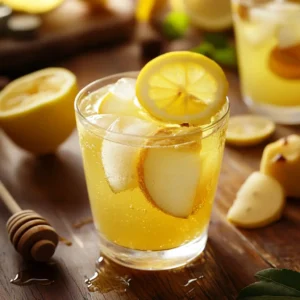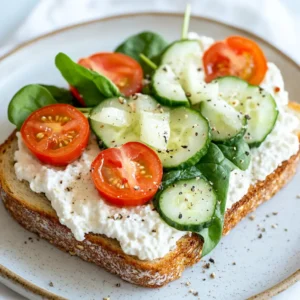Discover the best sugars to create that irresistible caramelized topping for the perfect crème brûlée.
Crème brûlée is, without a doubt, one of the most iconic desserts worldwide. The creamy custard paired with a thin, crispy layer of caramelized sugar makes it a favorite among dessert lovers. However, have you ever wondered which type of sugar is best for achieving that beautiful, crunchy top? While it may seem like sugar is just sugar, the choice you make can significantly impact the final result of your crème brûlée. In this article, we’ll explore the best sugar options for crème brûlée and why your choice truly matters.
Undoubtedly, crème brûlée is a dessert that exemplifies simplicity combined with elegance. Not only does it taste luxurious, but it is also surprisingly easy to make, provided you use the right ingredients and technique. The essential elements that define a classic crème brûlée are the silky custard base and, most importantly, the sugar topping, caramelized to crunchy perfection. Once you crack through that golden sugar crust and reveal the creamy custard underneath, the satisfaction is unbeatable.
Yet, achieving the perfect sugar crust is not as straightforward as it might seem. The type of sugar you choose plays a critical role in the success of your crème brûlée topping. Whether you’re a seasoned chef or a home baker hoping to impress guests, understanding how different sugars behave can make or break your dessert.
What is Crème Brûlée?
Crème brûlée, which translates to “burnt cream” in French, is a rich, creamy custard dessert topped with a layer of caramelized sugar. The contrast between the velvety custard and the crispy sugar topping is what makes it so delightful. Typically, the sugar is caramelized using a culinary torch, but some recipes suggest using a broiler. Either way, the goal is the same—to create a golden-brown shell that cracks beautifully when tapped with a spoon. Check out our complete guide on French desserts to learn more about the origins of crème brûlée and other classic recipes.
Achieving that perfect sugar topping is key to creating a memorable crème brûlée experience. Thus, the type of sugar you use is essential in achieving that flawless finish.
Why Does Sugar Matter?
Believe it or not, the sugar you choose affects several aspects of your crème brûlée, including texture, caramelization, and appearance. Not all sugars caramelize equally; some may burn too quickly, while others may not melt evenly. Therefore, understanding the properties of different sugars can help you achieve that flawless caramelized layer without any trouble.
Here are several factors to keep in mind:
- Caramelization Point: Each type of sugar has a different temperature at which it melts and caramelizes. Choosing the right sugar will help you achieve a smooth, uniform caramelized topping.
- Texture: The size and coarseness of the sugar granules directly affect how evenly the sugar melts. If the granules are too large, they may not melt uniformly; if they are too fine, they could burn too quickly.
- Flavor: Different sugars can impart subtle flavor variations, which can either enhance or overpower the custard.
With these factors in mind, let’s explore the best sugars for crème brûlée and how they affect your final product.
Best Sugars for Crème Brûlée
When deciding which sugar to use for your crème brûlée, several options are available. Each brings something different to the table, so it’s important to understand their pros and cons before making a decision.
Granulated Sugar: The Classic Choice
First and foremost, granulated white sugar is the most commonly used sugar for crème brûlée. It is fine enough to melt evenly when torched and has a neutral flavor that complements, rather than overwhelms, the custard. Additionally, it caramelizes quickly, making it ideal for creating that signature golden-brown layer.
Why it’s good for crème brûlée:
- It caramelizes evenly.
- The fine grains allow for a smooth finish.
- Its neutral flavor doesn’t overpower the custard.
Furthermore, granulated sugar is affordable and easy to find, which is why many home cooks and professional chefs use it as their go-to sugar. For a deeper look into how to use sugar in different desserts, see our article on the science of sugar in baking.
Superfine Sugar: For a Smooth, Professional Finish
Superfine sugar, also known as caster sugar, has smaller granules than regular granulated sugar. Because the grains are finer, it melts more quickly, leading to an ultra-smooth finish. Consequently, superfine sugar is a popular choice for those looking for a refined, professional touch.
Why it works for crème brûlée:
- It caramelizes faster than regular sugar.
- Creates an exceptionally smooth sugar crust.
- Evenly distributes across the custard surface.
However, due to its faster caramelization, it’s crucial to keep a close eye on it to avoid burning. For those who prefer a professional finish, superfine sugar is an excellent choice. Learn more about using different types of sugar in cooking and baking.
Brown Sugar: Adding Complexity and Flavor
For a more complex flavor, brown sugar is an interesting option. Its molasses content adds depth to the crème brûlée, creating a richer flavor and darker caramelized topping. Nevertheless, brown sugar can be challenging to work with because of its moisture content, which can result in uneven caramelization.
Pros of using brown sugar:
- Adds a subtle, rich flavor from the molasses.
- Provides a darker, more dramatic sugar crust.
Cons:
- Its higher moisture content can lead to uneven melting.
- It may not produce the same crisp, brittle top as white sugar.
If you’re feeling adventurous, mixing a small amount of brown sugar with granulated sugar can offer the best of both worlds. Read more about how brown sugar enhances various dessert recipes in our brown sugar vs. white sugar guide.
Demerara Sugar: For a Rich, Toffee-Like Flavor
Demerara sugar is another excellent option. It is a coarse, unrefined sugar with large, golden crystals. Besides, it adds a subtle toffee flavor to the crème brûlée, and its large crystals produce a thicker, crunchier caramelized layer. However, due to the larger granules, it may take longer to melt, so patience is key.
Why demerara works:
- Adds a rich, toffee-like flavor.
- The large crystals create a thick, crunchy caramel layer.
Challenges:
- Coarse texture can lead to uneven caramelization.
- Requires more control when using the torch to prevent burning.
If you want a sugar that offers extra texture and flavor, demerara is a wonderful choice. Check out our article on how to incorporate different textures into your desserts.
Turbinado Sugar: A Slight Twist on the Classic Recipe
Turbinado sugar, like demerara, has large crystals and a light molasses flavor. It is slightly less processed than regular white sugar, giving it a unique golden color. As a result, its flavor and texture provide a slight twist on traditional crème brûlée.
Benefits:
- Adds a mild molasses flavor.
- Gives a golden color to the sugar crust.
Drawbacks:
- Large crystals can make achieving an even caramel layer difficult.
- Requires careful attention to avoid burning.
For those who like to experiment with flavor, turbinado sugar is a fantastic option that offers a subtle difference from the classic recipe.
Tips for Caramelizing the Sugar Perfectly
Now that we’ve discussed the best sugars for crème brûlée, let’s move on to technique. Caramelizing the sugar correctly is crucial to achieving the perfect crust. Even if you have the ideal sugar, improper caramelization can ruin the final result.
Here are some expert tips to help you master the caramelization process:
- Spread the Sugar Evenly
First of all, make sure you sprinkle the sugar evenly over the surface of the custard. Doing so ensures that the entire surface caramelizes at the same rate, resulting in a uniform, crunchy top. Learn more about creating even textures in desserts here. - Use a Culinary Torch
While some recipes suggest using a broiler, a culinary torch is by far the most effective way to caramelize the sugar. Not only does it allow for better control, but it also prevents the sugar from burning or caramelizing unevenly. Hold the torch about 2-3 inches from the surface, moving it in circular motions to melt the sugar evenly. Find out how to use a culinary torch like a pro in our guide. - Chill the Custard Beforehand
Ensure that your custard is fully chilled before adding the sugar. A cold custard prevents the sugar from sinking into the custard and ensures that the custard stays smooth and creamy while only the sugar caramelizes. This contrast between the cool custard and warm, crispy sugar is what makes crème brûlée so delightful. - Choose the Right Amount of Sugar
Don’t be too heavy-handed with the sugar. A thick sugar layer may not caramelize evenly and could result in an overly hard crust. Instead, aim for a thin, even layer of sugar. Check out our sugar guide for the best ratios and tips. - Watch the Color
As you caramelize the sugar, keep a close eye on the color. Ideally, it should turn a golden brown. If the sugar starts to turn too dark or black, it is burning, which can add bitterness to the dessert. Therefore, it’s crucial to move the torch around constantly and avoid focusing on one spot for too long.
Common Mistakes to Avoid
Even with the best sugar and technique, mistakes can still happen. Below are some common errors to avoid when making crème brûlée:
- Using Too Much Sugar
A thick layer of sugar won’t caramelize evenly and can become too hard to crack. Therefore, stick to a thin, even layer for the best results. - Burning the Sugar
Burning the sugar is one of the most common mistakes. Always keep an eye on the sugar’s color and texture, and be sure to move the torch continuously to avoid burning any one spot. Learn how to master caramelizing in our caramelization guide. - Uneven Sprinkling
Failing to sprinkle the sugar evenly can lead to uneven caramelization. As a result, it’s essential to take your time and ensure the sugar is distributed uniformly across the top of the custard.
The Best Tools for Making Crème Brûlée
Having the right tools on hand is essential for perfecting crème brûlée. Here are some must-haves for your kitchen:
- Culinary Torch
Without a doubt, a culinary torch is the most important tool for caramelizing the sugar on top of your crème brûlée. It allows for precise control over the heat, which is necessary for achieving an even caramelization. Find out more about selecting the best culinary torch in our kitchen tools guide. - Ramekins
Ramekins are small, heatproof ceramic dishes ideal for serving individual portions of crème brûlée. When choosing ramekins, be sure to select ones that can withstand high heat. Explore our guide on choosing the best ramekins for baking. - Fine Mesh Sieve
Using a fine mesh sieve to strain your custard mixture before pouring it into the ramekins will ensure a smooth, lump-free custard. This step is crucial for achieving the perfect texture. Check out our top tips for creating the smoothest custards.
Conclusion: Choosing the Best Sugar for Crème Brûlée
In conclusion, the sugar you choose for your crème brûlée plays a significant role in the final texture and flavor of the dessert. Whether you opt for the classic granulated sugar, experiment with superfine sugar for a more professional finish, or add depth with brown or demerara sugar, each option brings something unique to the table.
Ultimately, the key is to experiment and find the sugar that works best for your preferred texture and flavor. Now that you’re armed with all the essential knowledge, you’re ready to create a stunning crème brûlée that will impress anyone lucky enough to try it!
Happy cooking! For more tips and techniques, visit our complete guide to mastering French desserts.



